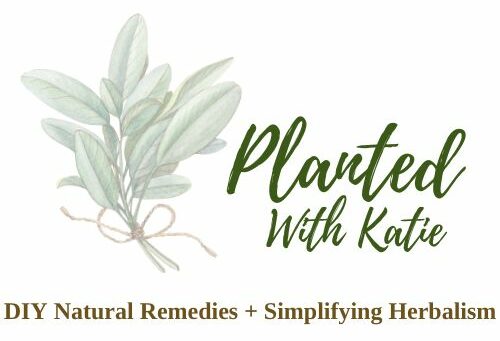Herbal Alternatives To Ozempic: Natural GLP-1 Herbs
Natural GLP-1 herbs may help support blood sugar balance, appetite control, and metabolism without relying on prescriptions. Let's talk about the top herbs and natural supplements that offer similar benefits to GLP-1 drugs in a gentler, more holistic way.
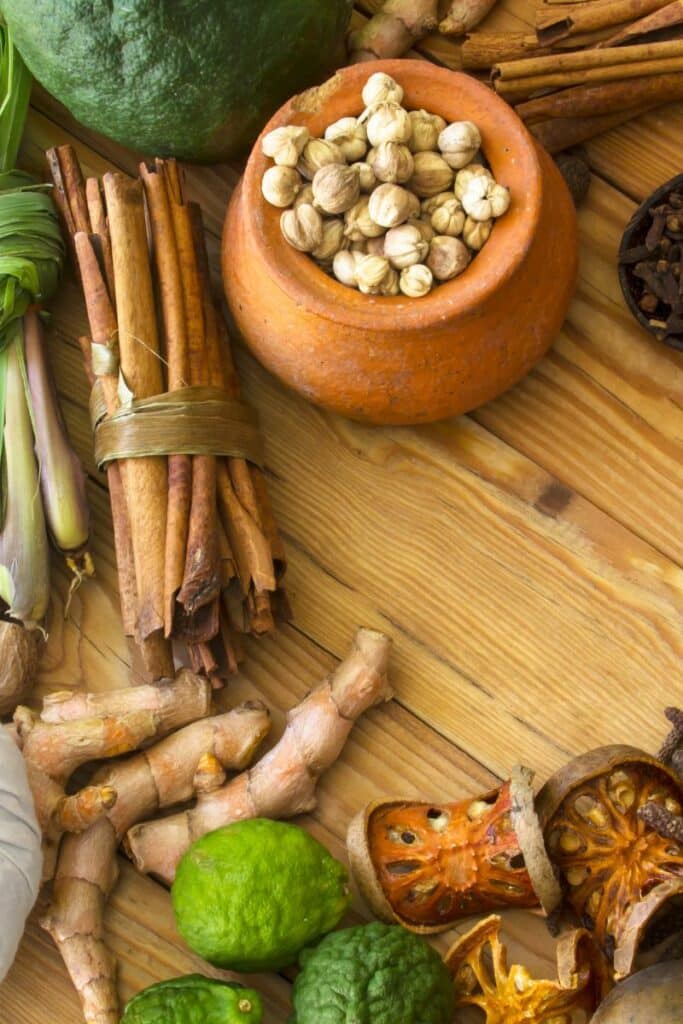
Disclaimer: This is not medical advice. Information and statements shown here are for educational and informational purposes only and are not to replace the advice of your healthcare professional.
This post may include affiliate links. Please refer to our disclaimer for full disclosure.
GLP-1 is a natural hormone made in the digestive tract. It plays a key role in blood sugar control, appetite, and insulin secretion. When you eat, your body releases GLP-1 to help slow digestion, reduce food intake, and support glucose metabolism. It also helps the body release insulin and lowers glucagon, which helps manage blood sugar levels.
In recent years, GLP-1 receptor agonists like Ozempic have become popular for weight loss and diabetes management. These drugs act like natural GLP-1 in the body and can help lower body weight and improve blood sugar levels. But they often come with side effects and are not the best option for everyone.
The good news is that some natural herbs and foods may boost GLP-1 levels and support GLP-1 activity in the body. This article will highlight natural alternatives that may gently help with appetite control, insulin sensitivity, and overall metabolic health without relying on prescription drugs.
What Is GLP-1 and Why Does It Matter?
GLP-1 is a hormone made in the digestive tract. It plays a key role in digestion, blood sugar control, and appetite. When you eat, GLP-1 helps slow how quickly food moves through your stomach, lowers blood sugar levels, and helps your body release insulin. It also reduces how much you eat by helping you feel full sooner, which can support weight management.

Raising GLP-1 levels naturally may improve blood sugar balance, increase insulin sensitivity, and support metabolic health. This can be helpful for people with conditions like insulin resistance, diabetes mellitus, or metabolic syndrome.
While GLP-1 receptor agonists found in prescription drugs can copy this hormone's effects, they often come with side effects. Natural options like herbs, healthy fats, leafy greens, and fiber-rich foods can support the body’s own GLP-1 production. A full-body approach with healthy eating, physical activity, and natural supplements may offer similar benefits more gently and safely.
Top 5 Natural GLP-1 Herbs
Some natural herbs may help the body make more GLP-1 or help it work better. These herbs can support blood sugar control, appetite control, and healthy weight. They may also help with insulin sensitivity, which is important for people with diabetes mellitus or other health conditions linked to blood sugar.
1. Berberine
Berberine is a bright yellow compound found in plants like goldenseal, barberry, and Oregon grape root. It’s one of the most studied natural supplements for blood sugar and insulin regulation.
Benefits of Berberine
- Supports blood sugar regulation in people with insulin resistance
- Helps improve insulin sensitivity
- Activates GLP-1 receptors to support appetite control
- Encourages GLP-1 secretion, promoting a feeling of fullness
- Helps regulate body weight and fat loss
- Supports gut bacteria, which may boost natural GLP-1 levels
- May offer similar results to prescription medications without the side effects
Clinical Findings
Berberine has been shown to increase GLP-1 levels in diabetic rats, suggesting a potential mechanism for its antidiabetic effects. https://joe.bioscientifica.com/view/journals/joe/200/2/159.xml
How To Use Berberine
Active constituents: Berberine alkaloid (not water-soluble)
Best form: Capsule or tincture or powder
Why: Berberine is poorly extracted in water. Capsules or tinctures are more effective for proper absorption.
Typical dose: 500 mg, 2 to 3 times daily (1,000–1,500 mg total per day)
When to avoid:
- Pregnancy and breastfeeding
- If taking medications for blood sugar or blood pressure
Interactions: May interact with metformin, blood thinners, and antibiotics
Caution: Can lower blood sugar significantly. Monitor closely if you are on medications for diabetes mellitus.
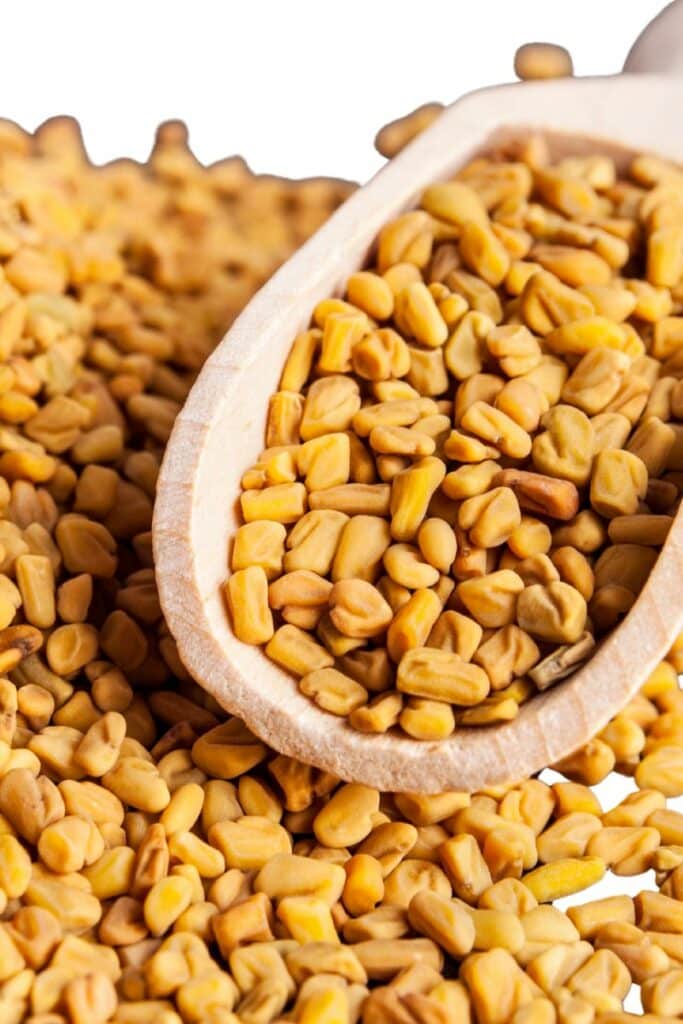
2. Fenugreek
Fenugreek seeds are rich in soluble fiber and galactomannan, which slow digestion and help the body better control blood sugar.
Benefits of Fenugreek
- Slows glucose absorption in the digestive tract
- May increase GLP-1 release, helping regulate food intake
- Supports insulin secretion and blood sugar balance
- Promotes appetite control by helping you feel full longer
- Feeds good gut bacteria to support gut health and GLP-1 activity
- May improve insulin sensitivity in people with metabolic syndrome
Clinical Findings
A compound derived from fenugreek seeds, known as N55, has been found to enhance the response of physiological levels of GLP-1, potentially aiding in glucose regulation.
https://www.nature.com/articles/s41598-017-12290-x
How To Use Fenugreek
Active constituents: Galactomannan (soluble fiber), steroidal saponins
Best form: Tea (for fiber), capsule (for concentrated support), or food (as seed powder)
Why: The fiber swells with water and supports digestion and blood sugar balance.
Typical dose:
- Tea/infusion: 1–2 teaspoons (2–4 grams) of crushed seeds daily
- Capsule: 500–1,000 mg, up to 2–3 times per day
When to avoid: - During pregnancy (may stimulate uterine contractions)
Interactions: May amplify the effects of insulin or diabetic medications
Caution: Can cause gas or digestive discomfort in high doses
3. Ginger
Ginger is a well-known digestive herb that also helps regulate blood sugar and support metabolic health.
Benefits of Ginger
- Promotes GLP-1 secretion
- Supports healthy glucose metabolism
- Reduces inflammation and oxidative stress
- Improves insulin sensitivity
- Helps with digestive issues like bloating, gas, and nausea
- Supports gut health, which plays a key role in GLP-1 activity
Clinical Findings
[6]-Gingerol, an active component of ginger, has been reported to facilitate glucose disposal in skeletal muscles through increased activity of glycogen synthase 1 and enhanced cell surface presentation of GLUT4 transporters.
https://pubmed.ncbi.nlm.nih.gov/28793909
How To Use Ginger
Active constituents: Gingerols and shogaols (best extracted in alcohol or heat)
Best form: Tincture, capsule, or decoction (long simmered tea)
Why: Gingerols are better extracted in alcohol or heat, making tincture or simmered tea more effective
Typical dose:
- Capsule: 500–1,000 mg, up to 2 times daily
- Tincture: 1–2 mL (20–40 drops), 2 to 3 times per day
- Tea (decoction): 2–3 grams fresh root simmered for 15+ minutes
When to avoid: - Before surgery or with blood-thinning medications
Interactions: May increase risk of bleeding if combined with anticoagulants
Caution: May cause mild heartburn or upset stomach in some people
4. Cinnamon
Cinnamon is packed with bioactive compounds that help regulate blood sugar and improve how the body uses insulin.
Benefits of Cinnamon
- Helps lower blood sugar levels
- Improves insulin response and secretion
- May support GLP-1 activity by improving metabolic function
- Encourages better appetite control
- A natural alternative with similar effects to some GLP-1 agonists
- Pairs well with a balanced diet for better results
Clinical Findings
Ingestion of 3 grams of cinnamon has been associated with increased GLP-1 concentrations and reduced postprandial serum insulin levels in healthy subjects.
https://pubmed.ncbi.nlm.nih.gov/19158209
Active constituents: Cinnamaldehyde, polyphenols
Best form: Powdered spice (in food or capsules), or strong tea
Why: Water and alcohol both extract cinnamon well. For long-term use, capsules are best to monitor dose.
Typical dose:
How To Use Cinnamon
- Capsule: 500–1,000 mg per day
- Tea: 1–2 teaspoons ground or broken cinnamon bark steeped in hot water
When to avoid: - In large doses if you have liver issues (especially with Cassia cinnamon, which contains coumarin)
Interactions: May lower blood sugar, especially with diabetes medications
Caution: Ceylon cinnamon is safer for long-term use due to low coumarin content
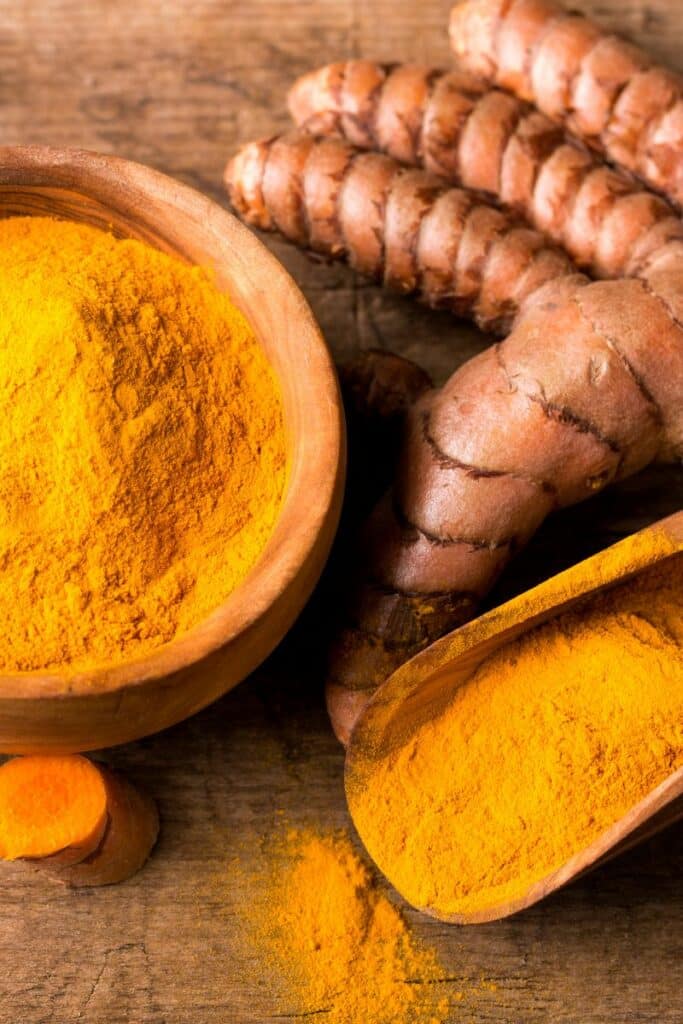
5. Turmeric (Curcumin)
Turmeric’s active ingredient, curcumin, has been shown in studies to support insulin and gut health—both important for GLP-1.
Benefits of Turmeric
- Has strong anti-inflammatory and antioxidant properties
- May help boost insulin sensitivity and blood sugar regulation
- Reduces oxidative stress, which can block GLP-1 production
- Supports gut microbiome health, linked to better GLP-1 release
- May improve appetite control and aid in weight management
Clinical Findings
Curcumin, the active compound in turmeric, has been shown to stimulate GLP-1 secretion in GLUTag cells, suggesting a potential role in enhancing GLP-1 levels.
https://www.sciencedirect.com/science/article/abs/pii/S0006291X13007468
How To Use Turmeric
Active constituents: Curcumin (poorly water-soluble, better absorbed with fat or alcohol)
Best form: Capsule, tincture, or golden milk (with fat and black pepper)
Why: Curcumin is fat-soluble and best absorbed with healthy fats and black pepper (which contains piperine to increase absorption)
Typical dose:
- Capsule: 500–1,000 mg curcumin extract, 1–2 times daily
- Tincture: 1–2 mL, 2 times daily
- Golden milk: 1 teaspoon turmeric powder + black pepper + olive oil or coconut milk
When to avoid: - During pregnancy in high doses
- If you have gallstones or bile duct issues
Interactions: May thin blood and interact with NSAIDs or blood pressure medications
Caution: May cause nausea in high doses or when taken on an empty stomach
These herbs are often used in natural supplements, teas, or tinctures. For best results, they should be part of a balanced diet and healthy lifestyle.
Always speak with a healthcare provider before starting herbal supplements, especially if you have a medical condition or take prescription drugs.
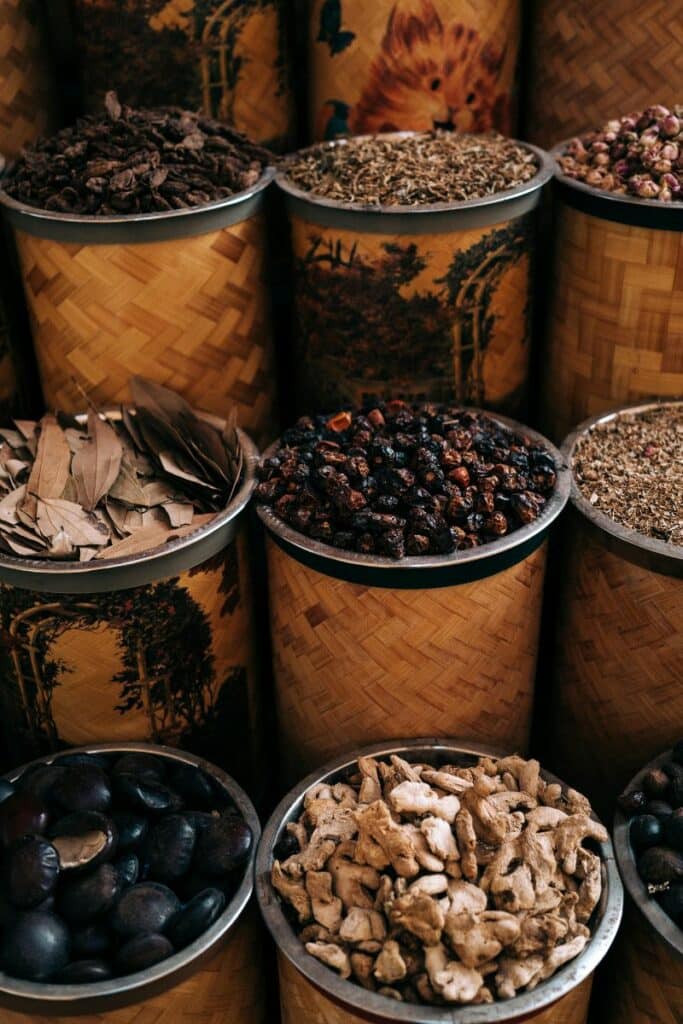
Make-At-Home Natural GLP-1 Herbal Powder
What You’ll Need:
Ingredients (by weight)
- 30 grams Berberine extract powder (standardized to 97%)
- 25 grams Fenugreek seed powder
- 15 grams Ginger root powder
- 15 grams Ceylon cinnamon powder
- 10 grams Turmeric root powder
- 0.5 grams Black pepper powder (for curcumin absorption)
You can find these herbs pre-powdered from trusted bulk herb suppliers online or grind them yourself using a high-speed spice grinder.
Supplies:
- Digital kitchen scale (for accurate measurements)
- Mixing bowl and spoon or whisk
- Fine-mesh sieve (optional for smoother powder)
- Clean glass jar with airtight lid (for storage)
- Optional: capsule machine and empty “00” veggie capsules
Instructions:
- Weigh each herb using your kitchen scale according to the amounts listed.
- Place all powders in a mixing bowl.
- Stir or whisk the herbs together for at least 1–2 minutes until fully blended.
- (Optional) Sift through a fine-mesh sieve to break up clumps and get a smoother blend.
- Store the finished powder in a glass jar with a tight-fitting lid, away from heat, moisture, and sunlight.
How to Take It:
Option A: As a powder (easiest method)
- Take 1 teaspoon (about 3 grams) per day.
- Mix into a smoothie, warm herbal tea, yogurt, or golden milk with a little olive oil for better absorption.
- Best taken before a meal to support appetite and digestion.
Option B: As capsules
- Fill “00” capsules with the powder using a capsule machine.
- Take 2 capsules twice per day (about 1 gram per serving).
- Store capsules in a dry, cool place in a labeled glass jar.
Precautions:
- Not recommended during pregnancy or breastfeeding unless guided by a healthcare provider.
- If you take diabetes, blood pressure, or blood thinning medications, talk to your provider first.
- May lower blood sugar—start with ½ teaspoon daily to assess tolerance.
- Discontinue use if you feel lightheaded, overly tired, or experience digestive upset.
Shelf Life:
- Use within 6 to 9 months for best freshness and potency.
- Always store in a cool, dry, dark place with a tightly sealed lid.
Lifestyle Tips That Naturally Support GLP-1
Along with herbs and natural supplements, simple daily habits can help boost GLP-1 levels and improve blood sugar control, metabolism, and appetite regulation. These small changes can make a big difference over time.
1. Eat More Whole Foods and Fiber-Rich Meals
- Choose whole grains, leafy greens, fatty fish, and colorful vegetables
- Add soluble fiber and fermentable fiber from foods like oats, flaxseed, chia, lentils, and apples
- Fiber helps slow digestion and supports the release of GLP-1
- Healthy fats like olive oil and avocados can improve GLP-1 activity
2. Support Your Gut Health
- The gut microbiome plays a key role in GLP-1 production
- Include probiotic strains and prebiotic foods like garlic, onions, and bananas
- Balanced gut bacteria help improve glucose metabolism and GLP-1 secretion

3. Stay Hydrated and Get Enough Sleep
- Aim for 7–8 hours of sleep each night to support metabolic health
- Drink water throughout the day to aid digestion and energy
- Poor sleep and dehydration reduce GLP-1 levels and raise cortisol
4. Move Your Body, Especially After Meals
- Light exercise like walking after meals can improve insulin sensitivity
- Regular movement supports blood sugar regulation and weight control
- Even 10–15 minutes of activity after eating helps
5. Manage Stress Daily
- High stress blocks insulin function and reduces GLP-1 activity
- Try deep breathing, quiet time, journaling, or gentle movement like stretching
- A calm nervous system supports better digestion and blood sugar balance
6. Combine Herbs with a Healthy Lifestyle
- Herbs work best when used with real food, movement, and good sleep
- A holistic approach improves long-term results, not just short-term fixes
- Together, herbs and daily habits support natural GLP-1 function without the need for prescription drugs in many healthy individuals
These simple shifts help your body do what it’s designed to do; regulate hunger, manage blood sugar, and maintain energy.
Conclusion
Natural GLP-1 herbs like berberine, fenugreek, ginger, cinnamon, and turmeric offer a gentle and effective way to support blood sugar balance, appetite control, and overall metabolic health. Unlike synthetic GLP-1 receptor agonists used in prescription medications, these herbs work in harmony with the body.
They help stimulate the natural release of GLP-1, support insulin secretion, improve insulin sensitivity, and regulate how the body processes glucose. Over time, these effects can help reduce food cravings, lower blood sugar spikes after meals, and support healthy weight management in a way that feels sustainable.
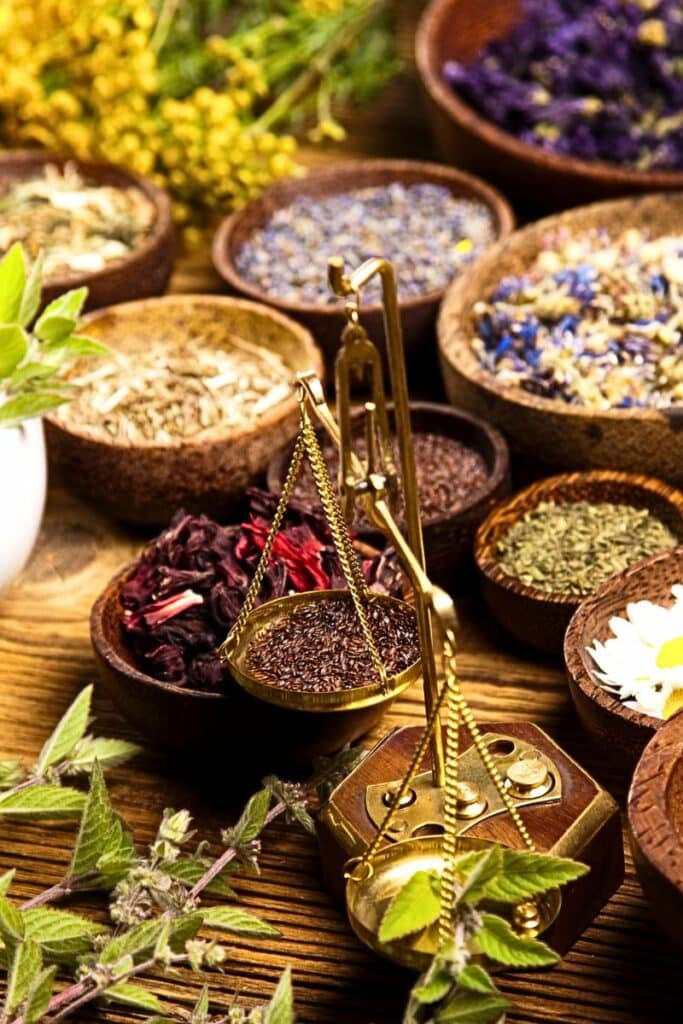
Each herb brings something unique. Berberine is known for its powerful effects on insulin sensitivity and may activate GLP-1 receptors. Fenugreek offers soluble fiber and compounds that slow digestion and support GLP-1 release. Ginger and cinnamon help regulate glucose metabolism while calming the digestive tract and improving insulin function.
Turmeric, rich in curcumin, supports gut bacteria and reduces inflammation—both of which are closely linked to GLP-1 production and gut-based hormone signaling. Together, these herbs target several pathways that impact appetite, blood sugar, and energy levels.
But herbs work best when they’re part of a bigger picture. Combining them with healthy lifestyle habits (like eating whole foods, focusing on gut health, staying physically active, drinking enough water, getting quality sleep, and managing daily stress) creates the ideal environment for your body to naturally produce and use GLP-1. Even simple actions, like walking after meals or including olive oil and leafy greens in your diet, help activate the body’s natural systems.
Real, lasting results don’t come from quick fixes or crash diets. They come from small, steady changes that support the body’s natural rhythm over time. By using natural herbs alongside daily routines that nourish your gut, balance your blood sugar, and reduce stress, you’re giving your body the tools it needs to thrive.
